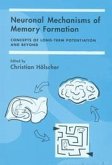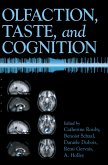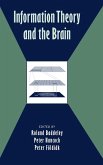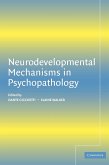Spatial Cognition, Spatial Perception
Herausgeber: Dolins, Francine L.; Mitchell, Robert W.
Spatial Cognition, Spatial Perception
Herausgeber: Dolins, Francine L.; Mitchell, Robert W.
- Broschiertes Buch
- Merkliste
- Auf die Merkliste
- Bewerten Bewerten
- Teilen
- Produkt teilen
- Produkterinnerung
- Produkterinnerung
An analysis of human and non-human animals' spatial cognitive, perceptual, and behavioural processes through mapping internal and external spatial knowledge.
Andere Kunden interessierten sich auch für
![Neurodevelopmental Mechanisms in Psychopathology Neurodevelopmental Mechanisms in Psychopathology]() Dante Cicchetti / Elaine F. Walker (eds.)Neurodevelopmental Mechanisms in Psychopathology68,99 €
Dante Cicchetti / Elaine F. Walker (eds.)Neurodevelopmental Mechanisms in Psychopathology68,99 €![Neuronal Mechanisms of Memory Formation Neuronal Mechanisms of Memory Formation]() Christian Hölscher (ed.)Neuronal Mechanisms of Memory Formation115,99 €
Christian Hölscher (ed.)Neuronal Mechanisms of Memory Formation115,99 €![Olfaction, Taste, and Cognition Olfaction, Taste, and Cognition]() Catherine Rouby / Benoist Schaal / Danièle Dubois / Rémi Gervais / A. Holley (eds.)Olfaction, Taste, and Cognition158,99 €
Catherine Rouby / Benoist Schaal / Danièle Dubois / Rémi Gervais / A. Holley (eds.)Olfaction, Taste, and Cognition158,99 €![The Neuroscience of Psychological Therapies The Neuroscience of Psychological Therapies]() Rowland W. FolensbeeThe Neuroscience of Psychological Therapies62,99 €
Rowland W. FolensbeeThe Neuroscience of Psychological Therapies62,99 €![Latent Inhibition Latent Inhibition]() Latent Inhibition147,99 €
Latent Inhibition147,99 €![Information Theory and the Brain Information Theory and the Brain]() Information Theory and the Brain139,99 €
Information Theory and the Brain139,99 €![Neurodevelopmental Mechanisms in Psychopathology Neurodevelopmental Mechanisms in Psychopathology]() Dante CicchettiNeurodevelopmental Mechanisms in Psychopathology119,99 €
Dante CicchettiNeurodevelopmental Mechanisms in Psychopathology119,99 €-
-
-
An analysis of human and non-human animals' spatial cognitive, perceptual, and behavioural processes through mapping internal and external spatial knowledge.
Produktdetails
- Produktdetails
- Verlag: Cambridge University Press
- Seitenzahl: 606
- Erscheinungstermin: 13. März 2014
- Englisch
- Abmessung: 229mm x 152mm x 33mm
- Gewicht: 865g
- ISBN-13: 9781107646230
- ISBN-10: 1107646235
- Artikelnr.: 41251558
- Herstellerkennzeichnung
- Libri GmbH
- Europaallee 1
- 36244 Bad Hersfeld
- gpsr@libri.de
- Verlag: Cambridge University Press
- Seitenzahl: 606
- Erscheinungstermin: 13. März 2014
- Englisch
- Abmessung: 229mm x 152mm x 33mm
- Gewicht: 865g
- ISBN-13: 9781107646230
- ISBN-10: 1107646235
- Artikelnr.: 41251558
- Herstellerkennzeichnung
- Libri GmbH
- Europaallee 1
- 36244 Bad Hersfeld
- gpsr@libri.de
Introduction 1. Linking spatial cognition and spatial perception F. L.
Dolins and R. W. Mitchell; Part I. What Do Animals Know and How Do They
Represent External Space?: 2. Psychology and the philosophy of spatial
perception: a history, or how the idea of spatial cognition in animals
developed R. W. Mitchell and F. L. Dolins; 3. Common principles shared by
spatial and other kinds of cognition K. Cheng; 4. To be buried in thought,
lost in space or lost in action: is that the question? E. Menzel; Part II.
Perception and Memory of Landmarks: Implications for Spatial Behaviour and
Cognition: 5. The encoding of geometry in various vertebrate species C.
Thinus-Blanc, V. Chabanne, L. Tommasi, P. Peruch and J. Vauclair; 6. The
visually guided routes of ants T. Collett and P. Graham; 7. The role of
landmarks in small and large scale navigation S. D. Healy and V. A.
Braithwaite; 8. Examining spatial cognitive strategies in small-scale and
large-scale space in tamarin monkeys P. A. Garber and F. L. Dolins; 9.
Spatial learning and foraging in macaques C. Menzel; Part III. Evolutionary
Perspectives of Cognitive Capacities in Spatial Perception and Object
Recognition: 10. The evolution of human spatial cognition T. Wynn; 11.
Egocentric and allocentric spatial learning in the nonhuman primate L.
Rehbein, S. Schettler, R. Killiany and M. Moss; 12. Does the nature of
cetacean perception make understanding object permanence unnecessary? R. W.
Mitchell and E. Hoban; 13. Multimodal sensory integration and concurrent
navigation strategies for spatial cognition in real and artificial
organisms A. Arleo and L. Ronde-Reig; Part IV. Does Mapping of the Body
Generate Understanding of External Space?: 14. Movement: the generative
source of spatial perception and cognition M. Sheets-Johnstone; 15.
Understanding the body: spatial perception and spatial cognition R. W.
Mitchell; 16. The evolution of parietal areas involved in hand use in
primates L. Krubitzer and E. Disbrow; 17. Body mapping and spatial
transformations S. H. Creem-Regehr; 18. Understanding of external space
generated by bodily re-mapping: an insight from the neurophysiology of
tool-using monkeys A. Iriki; 19. Left-right spatial discrimination and the
evolution of hemispheric specialization: some new thoughts on some old
ideas W. D. Hopkins and C. Cantalupo; Part V. Comparisons of Human and
Non-Human Primate Spatial Cognitive Abilities: 20. The geographical
imagination R. Sambrook and D. Zurick; 21. Of chimps and children: use of
spatial symbols by two species J. DeLoache and M. Bloom; 22. Chimpanzee
spatial skills: a model for human performance on scale model tasks? S. Till
Boysen and K. A. Bard; 23. The development of place learning in comparative
perspective A. Learmonth and N. Newcombe; 24. Spatial cognition and memory
in symbol-competent chimpanzees C. Menzel.
Dolins and R. W. Mitchell; Part I. What Do Animals Know and How Do They
Represent External Space?: 2. Psychology and the philosophy of spatial
perception: a history, or how the idea of spatial cognition in animals
developed R. W. Mitchell and F. L. Dolins; 3. Common principles shared by
spatial and other kinds of cognition K. Cheng; 4. To be buried in thought,
lost in space or lost in action: is that the question? E. Menzel; Part II.
Perception and Memory of Landmarks: Implications for Spatial Behaviour and
Cognition: 5. The encoding of geometry in various vertebrate species C.
Thinus-Blanc, V. Chabanne, L. Tommasi, P. Peruch and J. Vauclair; 6. The
visually guided routes of ants T. Collett and P. Graham; 7. The role of
landmarks in small and large scale navigation S. D. Healy and V. A.
Braithwaite; 8. Examining spatial cognitive strategies in small-scale and
large-scale space in tamarin monkeys P. A. Garber and F. L. Dolins; 9.
Spatial learning and foraging in macaques C. Menzel; Part III. Evolutionary
Perspectives of Cognitive Capacities in Spatial Perception and Object
Recognition: 10. The evolution of human spatial cognition T. Wynn; 11.
Egocentric and allocentric spatial learning in the nonhuman primate L.
Rehbein, S. Schettler, R. Killiany and M. Moss; 12. Does the nature of
cetacean perception make understanding object permanence unnecessary? R. W.
Mitchell and E. Hoban; 13. Multimodal sensory integration and concurrent
navigation strategies for spatial cognition in real and artificial
organisms A. Arleo and L. Ronde-Reig; Part IV. Does Mapping of the Body
Generate Understanding of External Space?: 14. Movement: the generative
source of spatial perception and cognition M. Sheets-Johnstone; 15.
Understanding the body: spatial perception and spatial cognition R. W.
Mitchell; 16. The evolution of parietal areas involved in hand use in
primates L. Krubitzer and E. Disbrow; 17. Body mapping and spatial
transformations S. H. Creem-Regehr; 18. Understanding of external space
generated by bodily re-mapping: an insight from the neurophysiology of
tool-using monkeys A. Iriki; 19. Left-right spatial discrimination and the
evolution of hemispheric specialization: some new thoughts on some old
ideas W. D. Hopkins and C. Cantalupo; Part V. Comparisons of Human and
Non-Human Primate Spatial Cognitive Abilities: 20. The geographical
imagination R. Sambrook and D. Zurick; 21. Of chimps and children: use of
spatial symbols by two species J. DeLoache and M. Bloom; 22. Chimpanzee
spatial skills: a model for human performance on scale model tasks? S. Till
Boysen and K. A. Bard; 23. The development of place learning in comparative
perspective A. Learmonth and N. Newcombe; 24. Spatial cognition and memory
in symbol-competent chimpanzees C. Menzel.
Introduction 1. Linking spatial cognition and spatial perception F. L.
Dolins and R. W. Mitchell; Part I. What Do Animals Know and How Do They
Represent External Space?: 2. Psychology and the philosophy of spatial
perception: a history, or how the idea of spatial cognition in animals
developed R. W. Mitchell and F. L. Dolins; 3. Common principles shared by
spatial and other kinds of cognition K. Cheng; 4. To be buried in thought,
lost in space or lost in action: is that the question? E. Menzel; Part II.
Perception and Memory of Landmarks: Implications for Spatial Behaviour and
Cognition: 5. The encoding of geometry in various vertebrate species C.
Thinus-Blanc, V. Chabanne, L. Tommasi, P. Peruch and J. Vauclair; 6. The
visually guided routes of ants T. Collett and P. Graham; 7. The role of
landmarks in small and large scale navigation S. D. Healy and V. A.
Braithwaite; 8. Examining spatial cognitive strategies in small-scale and
large-scale space in tamarin monkeys P. A. Garber and F. L. Dolins; 9.
Spatial learning and foraging in macaques C. Menzel; Part III. Evolutionary
Perspectives of Cognitive Capacities in Spatial Perception and Object
Recognition: 10. The evolution of human spatial cognition T. Wynn; 11.
Egocentric and allocentric spatial learning in the nonhuman primate L.
Rehbein, S. Schettler, R. Killiany and M. Moss; 12. Does the nature of
cetacean perception make understanding object permanence unnecessary? R. W.
Mitchell and E. Hoban; 13. Multimodal sensory integration and concurrent
navigation strategies for spatial cognition in real and artificial
organisms A. Arleo and L. Ronde-Reig; Part IV. Does Mapping of the Body
Generate Understanding of External Space?: 14. Movement: the generative
source of spatial perception and cognition M. Sheets-Johnstone; 15.
Understanding the body: spatial perception and spatial cognition R. W.
Mitchell; 16. The evolution of parietal areas involved in hand use in
primates L. Krubitzer and E. Disbrow; 17. Body mapping and spatial
transformations S. H. Creem-Regehr; 18. Understanding of external space
generated by bodily re-mapping: an insight from the neurophysiology of
tool-using monkeys A. Iriki; 19. Left-right spatial discrimination and the
evolution of hemispheric specialization: some new thoughts on some old
ideas W. D. Hopkins and C. Cantalupo; Part V. Comparisons of Human and
Non-Human Primate Spatial Cognitive Abilities: 20. The geographical
imagination R. Sambrook and D. Zurick; 21. Of chimps and children: use of
spatial symbols by two species J. DeLoache and M. Bloom; 22. Chimpanzee
spatial skills: a model for human performance on scale model tasks? S. Till
Boysen and K. A. Bard; 23. The development of place learning in comparative
perspective A. Learmonth and N. Newcombe; 24. Spatial cognition and memory
in symbol-competent chimpanzees C. Menzel.
Dolins and R. W. Mitchell; Part I. What Do Animals Know and How Do They
Represent External Space?: 2. Psychology and the philosophy of spatial
perception: a history, or how the idea of spatial cognition in animals
developed R. W. Mitchell and F. L. Dolins; 3. Common principles shared by
spatial and other kinds of cognition K. Cheng; 4. To be buried in thought,
lost in space or lost in action: is that the question? E. Menzel; Part II.
Perception and Memory of Landmarks: Implications for Spatial Behaviour and
Cognition: 5. The encoding of geometry in various vertebrate species C.
Thinus-Blanc, V. Chabanne, L. Tommasi, P. Peruch and J. Vauclair; 6. The
visually guided routes of ants T. Collett and P. Graham; 7. The role of
landmarks in small and large scale navigation S. D. Healy and V. A.
Braithwaite; 8. Examining spatial cognitive strategies in small-scale and
large-scale space in tamarin monkeys P. A. Garber and F. L. Dolins; 9.
Spatial learning and foraging in macaques C. Menzel; Part III. Evolutionary
Perspectives of Cognitive Capacities in Spatial Perception and Object
Recognition: 10. The evolution of human spatial cognition T. Wynn; 11.
Egocentric and allocentric spatial learning in the nonhuman primate L.
Rehbein, S. Schettler, R. Killiany and M. Moss; 12. Does the nature of
cetacean perception make understanding object permanence unnecessary? R. W.
Mitchell and E. Hoban; 13. Multimodal sensory integration and concurrent
navigation strategies for spatial cognition in real and artificial
organisms A. Arleo and L. Ronde-Reig; Part IV. Does Mapping of the Body
Generate Understanding of External Space?: 14. Movement: the generative
source of spatial perception and cognition M. Sheets-Johnstone; 15.
Understanding the body: spatial perception and spatial cognition R. W.
Mitchell; 16. The evolution of parietal areas involved in hand use in
primates L. Krubitzer and E. Disbrow; 17. Body mapping and spatial
transformations S. H. Creem-Regehr; 18. Understanding of external space
generated by bodily re-mapping: an insight from the neurophysiology of
tool-using monkeys A. Iriki; 19. Left-right spatial discrimination and the
evolution of hemispheric specialization: some new thoughts on some old
ideas W. D. Hopkins and C. Cantalupo; Part V. Comparisons of Human and
Non-Human Primate Spatial Cognitive Abilities: 20. The geographical
imagination R. Sambrook and D. Zurick; 21. Of chimps and children: use of
spatial symbols by two species J. DeLoache and M. Bloom; 22. Chimpanzee
spatial skills: a model for human performance on scale model tasks? S. Till
Boysen and K. A. Bard; 23. The development of place learning in comparative
perspective A. Learmonth and N. Newcombe; 24. Spatial cognition and memory
in symbol-competent chimpanzees C. Menzel.









